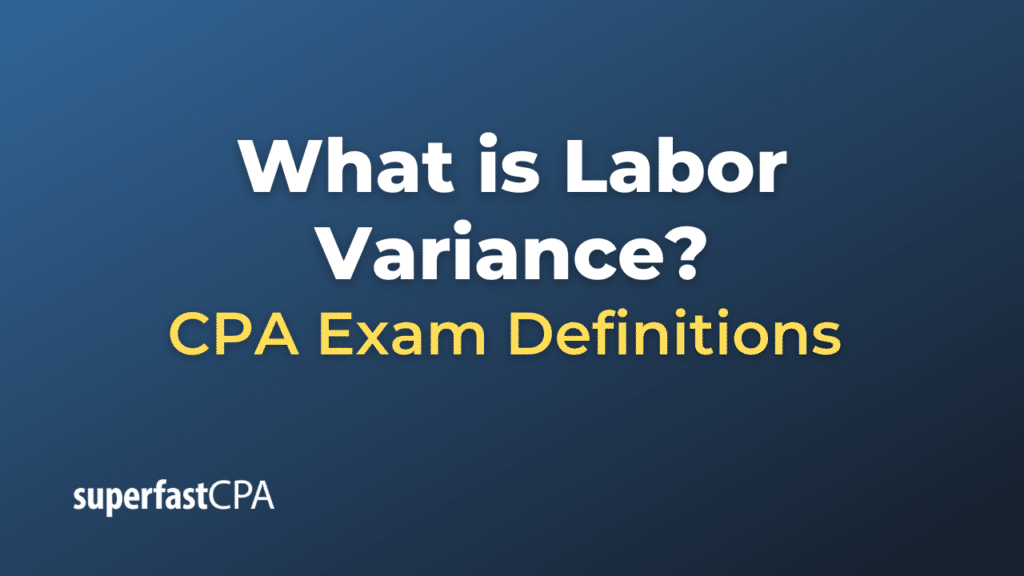Labor Variance
Labor variance, often referred to as direct labor variance, is a term used in managerial and cost accounting to measure the difference between the actual cost of labor and the standard or budgeted cost of labor. Labor variance is a key component in understanding the efficiency and effectiveness of production processes.
Labor variance is generally divided into two main types:
- Labor Efficiency Variance: This measures the difference between the actual hours worked and the standard hours that should have been worked for the actual level of production, multiplied by the standard labor rate per hour. A positive variance indicates efficiency, as fewer hours were worked than expected, while a negative variance suggests inefficiency.
- Labor Rate Variance: This refers to the difference between the actual labor rate paid and the standard labor rate that was expected, multiplied by the actual hours worked. A positive variance indicates that the actual labor rate was less than the expected rate, while a negative variance means the actual rate was higher.
Understanding labor variances can help businesses identify issues with their labor management, such as paying higher wages than anticipated, or workers taking longer to complete tasks than expected. It can also help highlight areas where efficiencies could be improved.
Example of Labor Variance
Let’s go through an example of calculating both Labor Efficiency Variance and Labor Rate Variance.
Assume a furniture company budgets for its workers to produce 100 chairs each week. According to the standard set by the company, each chair requires 2 hours of labor to produce, and the standard labor rate is $20 per hour.
- Labor Efficiency Variance:
Let’s say in one particular week, the company produces the planned 100 chairs, but it takes 210 hours instead of the standard 200 hours (100 chairs x 2 hours/chair).
The labor efficiency variance would be calculated as follows:
Labor Efficiency Variance = (Actual hours – Standard hours) x Standard rate
Labor Efficiency Variance = (210 hours – 200 hours) x $20/hour = $200 unfavorable
The variance is unfavorable because the company used more labor hours than planned to produce the 100 chairs, indicating lower efficiency.
- Labor Rate Variance:
Now, let’s also assume that due to unexpected market conditions, the company had to pay an average of $22 per hour instead of the standard $20 per hour for those 210 hours of work.
The labor rate variance would be calculated as follows:
Labor Rate Variance = (Actual rate – Standard rate) x Actual hours
Labor Rate Variance = ($22/hour – $20/hour) x 210 hours = $420 unfavorable
The variance is unfavorable because the company had to pay more per labor hour than planned, leading to a higher cost.
Understanding these variances can help the company make adjustments, improve efficiency, and better control labor costs in the future.













